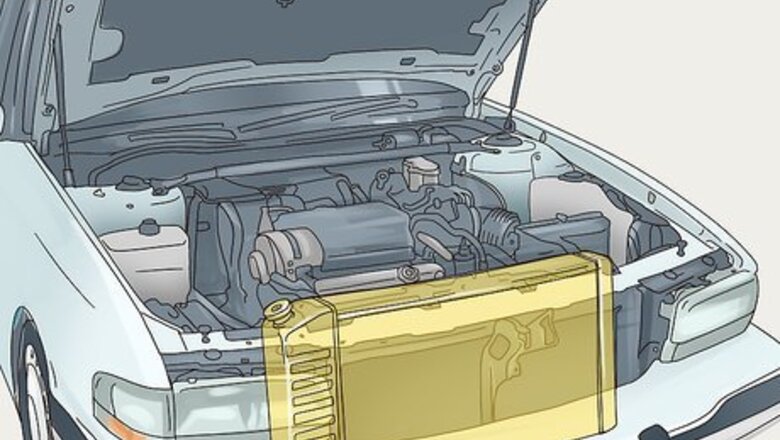
views
X
Research source
Changing the coolant requires draining the existing fluids and flushing the system before you top up on fresh coolant. It only takes an hour or so, and we’ll show you how!
- Wait for your engine to cool, then open your radiator pressure cap. Place an oil pan beneath the radiator, open the drain valve, and drain the old fluid.
- Add radiator cleaning fluid directly to the radiator, then run your car for 15 minutes. Wait for it to cool, then drain the fluid.
- Fill the radiator with distilled water, run the engine, then drain the water. Finally, top up your radiator with fresh coolant.
Draining Old Fluids
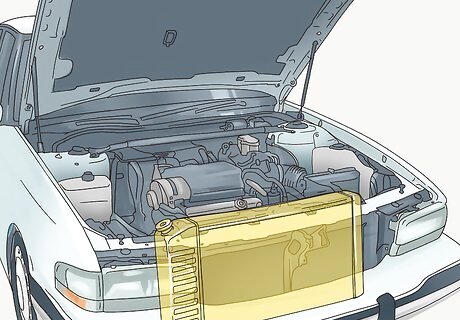
Lift the hood of your vehicle and locate the radiator. While the engine is cool (about an hour after using the car), pop the hood and find the radiator. The radiator is a long, narrow metal tank usually at the nose of your vehicle, in front of the engine. It has a metal cap on top that you remove to fill it with fluid. Also, go ahead and put on safety goggles to protect your eyes and rubber gloves to keep your hands clean. If the radiator is visibly dirty, use a nylon brush and soapy water to clean the exterior surface.
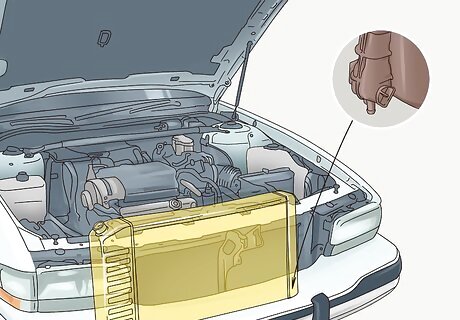
Unscrew the radiator cap and place an oil pan under the radiator nozzle. Use your hand to unscrew the metal cap on top of your radiator, then set the cap aside. Then, peer under the nose of the car to locate the radiator drain nozzle, or “petcock.” This is a metal piece on the bottom corner of your radiator. Place an oil pan, bucket, or other disposable, 2-gallon (7.6 L) container directly beneath the drain nozzle. If your car sits low to the ground, jack the front of your vehicle for easier access, and to fit a bucket or oil pan beneath it.
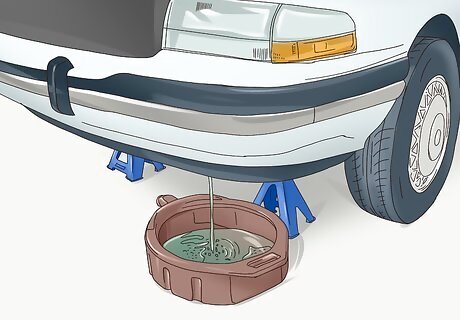
Open the drain valve and let the old coolant leak out. Turn the small handle on your radiator drain valve counterclockwise to slowly open it. Open it just enough that the old coolant starts to flow slowly and steadily—not too quickly, or it may splash and make a mess. Let the the coolant drain until the flow stops, then close the drain valve by turning the handle clockwise. Your drain valve may require the use of a screwdriver to open. Consult your car’s manual for drain valve operation instructions. After, pour the old coolant into clearly labeled, plastic jugs and bring them to a mechanic to dispose of. Never pour old coolant down any drains or onto the ground—it’s toxic, and may cause harm.
Flushing the Radiator
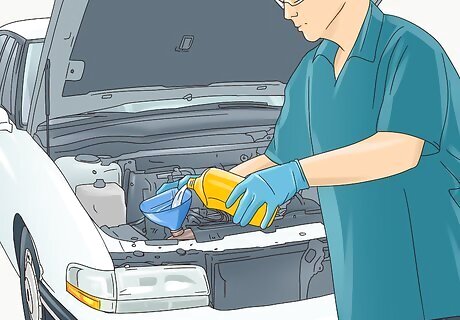
Pour radiator cleaner and distilled water into the radiator. Use a funnel to pour a mix of radiator cleaning fluid ( or “flush”) and distilled water into the top of your radiator, where you removed the metal cap. Typically, pour the full bottle of cleaner into the radiator first, followed by 1 gallon (3.8 L) of distilled water, but check the instructions on your cleaner’s packaging for specific directions. Put the pressure cap back on once you’ve filled the radiator. Distilled water does not contain added minerals and is gentle on your radiator. Avoid tap water or hose water, which may add debris to your radiator. Consult your vehicle’s owner manual to see if the manufacturer recommends a specific cleaner or amount to use.

Turn your vehicle on with the heat on full blast for 10-15 minutes. Turn the key in the ignition so the engine starts, and let it run for at least 10 minutes to allow the internal thermometer to open. The cleaner and water mixture will work its way through the entire cooling system of your car to remove any residue of old antifreeze. Make sure you’re working in a well-ventilated area. If you’re working in a garage, make sure the door is open so the fumes can escape.
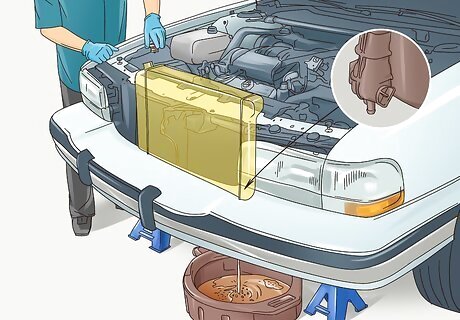
Drain the radiator after the engine has cooled for 15-30 minutes. Ensure that the engine is cool to the touch—the cleaner and water will be hot after running through your vehicle. Then, place the drainage pan underneath the radiator drain valve once more, and open the drain valve as you did before to let the cleaner drain from the radiator completely. The water may be brown or rust-colored after working through the entire cooling system, which means the cleaner has done its job. The liquid may be clear if your radiator is already fairly clean.
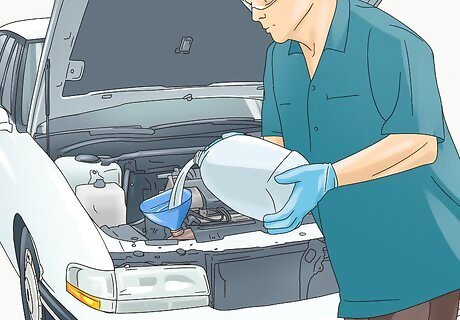
Flush the radiator with distilled water until the drainage runs clear. Repeat filling the radiator with 1 gallon (3.8 L) of distilled water, running the car with the heat on, and draining it once it’s cooled. This ensures that any leftover debris or cleaner is flushed out of the system, and that your radiator is ready for fresh coolant. Optionally, use a screwdriver to remove the transparent coolant overflow tank next to your engine and manually rinse it out with distilled water, as well. Debris is prone to building up inside this tank, so it’s good to take a moment to clean it. In a pinch, use a garden hose to fill the radiator, keeping the drainage valve open so that the water can escape, rinsing out the inside of the radiator.
Refilling the Radiator
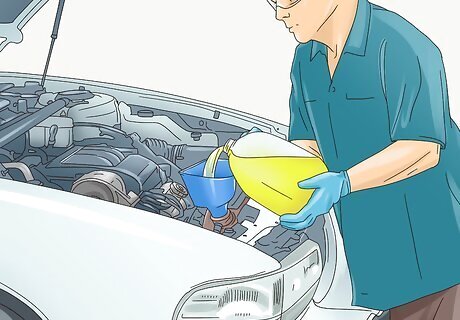
Fill the radiator with engine coolant or diluted antifreeze. Add engine coolant to the radiator by funneling the liquid into the top of the radiator, where you added the other liquids. Fill the radiator until the coolant reaches about 1 in (2.5 cm) beneath the lip of the opening, or to the fill line indicated on your radiator. Pour slowly since the liquid may back up into the funnel. Engine coolant is a 50:50 mix of antifreeze and distilled water. If you only have antifreeze, mix 1⁄2 US gal (1.9 L) of antifreeze with 1⁄2 US gal (1.9 L) of distilled water, then add it to your engine in the same manner as coolant.
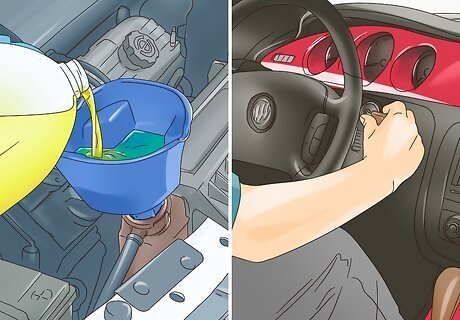
Run your vehicle for 15 minutes to pull the coolant into your cooling system. Your car holds more coolant than what fits in the radiator, and the coolant also needs to disperse through the pipes and internals of your car. Turn the ignition and let the car run for 15 minutes to allow the coolant to be taken all the way through the cooling system.
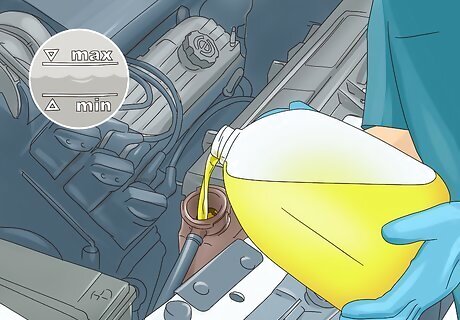
Add more coolant to fill the reservoir. Turn off the engine and let your car cool for 15 minutes before removing the pressure cap again. Check to see if the coolant is level with the fill line inside the radiator. If not, add more of the solution. Pour any leftover coolant into the transparent overflow reservoir, or save it until the next time you need to flush your system.
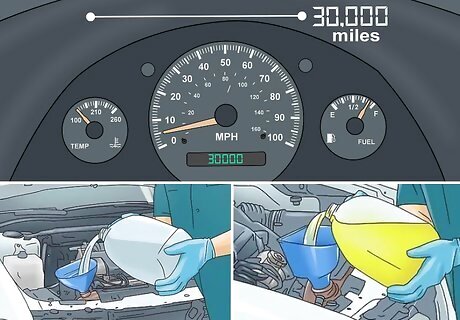
Flush your radiator every 30,000 miles. This keeps your radiator clean and free of blockage or debris. Also, give your radiator a flush any time you notice your car repeatedly overheating, see white or blue smoke coming from under the hood, notice a coolant leak (fluids on the ground under your car’s nose), or notice a knocking noise in your engine. These problems are often related to your radiator. If your problem persists after flushing your radiator, consult a mechanic to diagnose the issue.


















Comments
0 comment